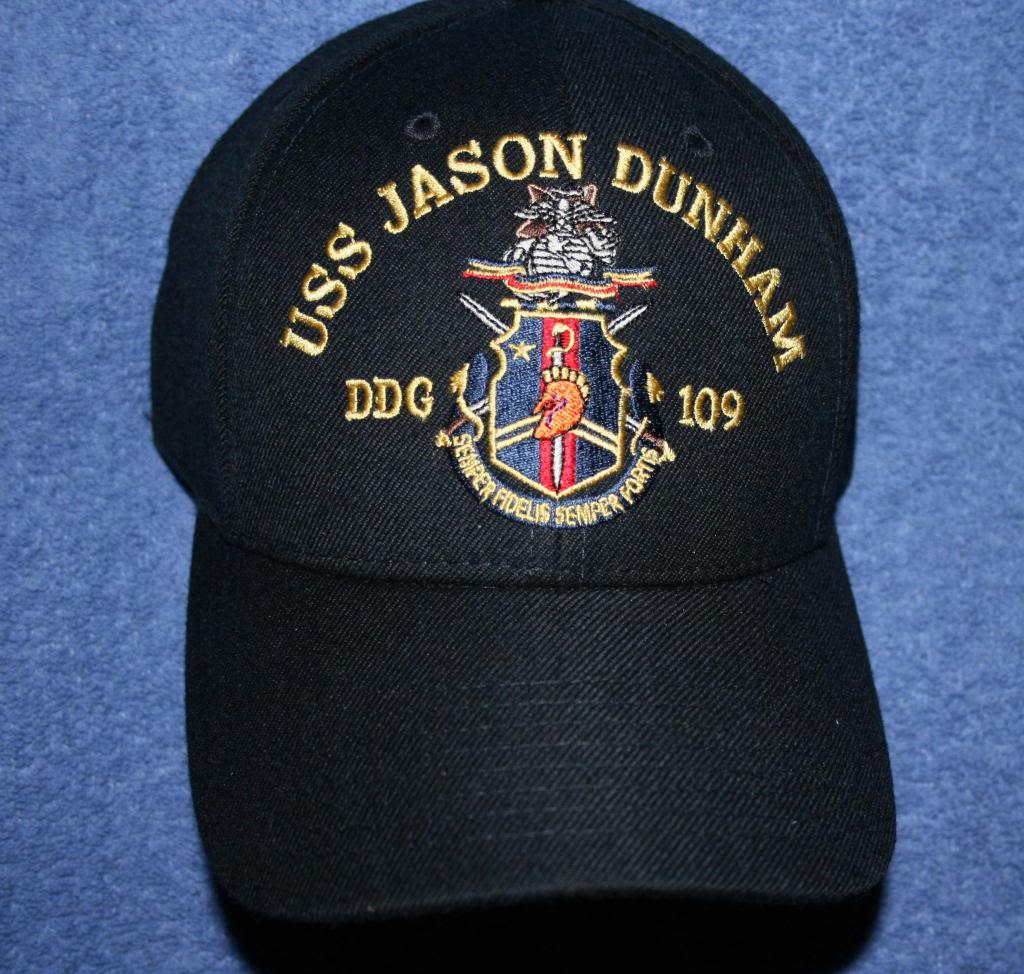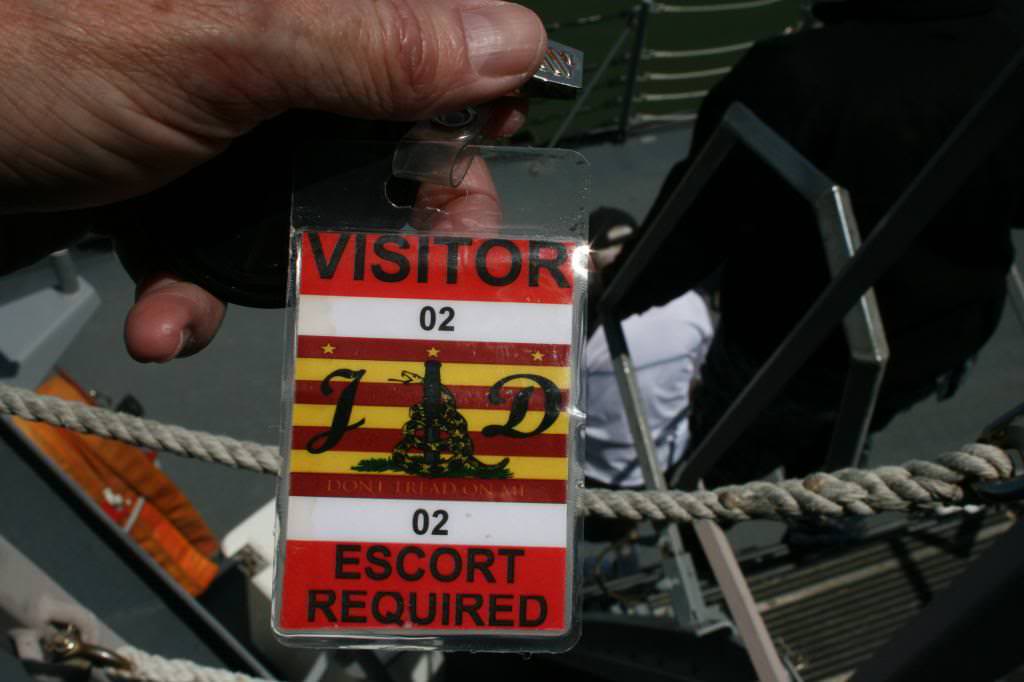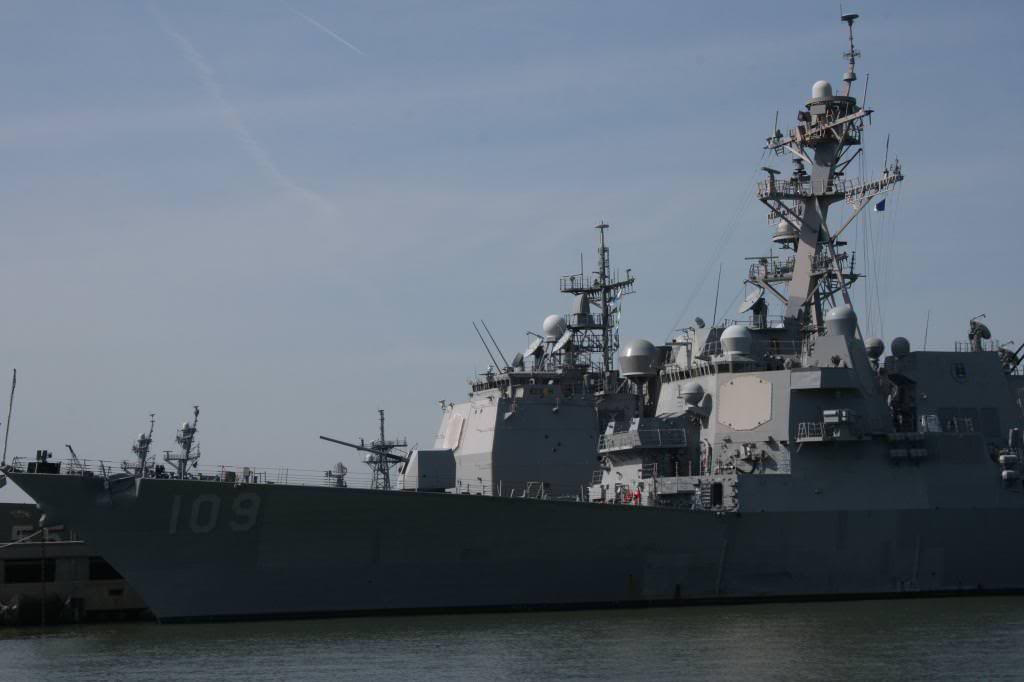1941 – U.S. troops occupied Greenland to prevent Nazi infiltration.
1941 – The President transferred ten Coast Guard cutters to England, stating that he found the defense of the United Kingdom vital to the defense of the United States. The cutters were of the 250-foot Lake class, consisting of Cayuga, Itasca, Saranac, Sebago, Shoshone, Champlain, Mendota, Chelan, Pontchartrain, and Tahoe. Coast Guardsmen trained British crews in Long Island Sound to operate the cutters.
1941 – USS Niblack, while rescuing survivors of torpedoed ship, depth charged German submarine; first action of WW II between U.S. and German navies.
1942 – About 12,000 Japanese land on Cebu. The small number of American defenders retreat inland.
1942 – The day after the surrender of the main Philippine island of Luzon to the Japanese, the 75,000 Filipino and American troops captured on the Bataan Peninsula begin a forced march to a prison camp near Cabanatuan. During this infamous trek, known as the “Bataan Death March,” the prisoners were forced to march 85 miles in six days, with only one meal of rice during the entire journey. By the end of the march, which was punctuated with atrocities committed by the Japanese guards, hundreds of Americans and many more Filipinos had died. The day after Japan bombed the U.S. naval base at Pearl Harbor, the Japanese invasion of the Philippines began. Within a month, the Japanese had captured Manila, the capital of the Philippines, and the U.S. and Filipino defenders of Luzon were forced to retreat to the Bataan Peninsula.
For the next three months, the combined U.S.-Filipino army, under the command of U.S. General Jonathan Wainwright, held out impressively despite a lack of naval and air support. Finally, on April 7, with his army crippled by starvation and disease, Wainwright began withdrawing as many troops as possible to the island fortress of Corregidor in Manila Bay. However, two days later, 75,000 Allied troops were trapped by the Japanese and forced to surrender. The next day, the Bataan Death March began. Of those who survived to reach the Japanese prison camp near Cabanatuan, few lived to celebrate U.S. General Douglas MacArthur’s liberation of Luzon in 1945. In the Philippines, homage is paid to the victims of the Bataan Death March every April on Bataan Day, a national holiday that sees large groups of Filipinos solemnly re-walking parts of the death route.
1944 – German submarines U-515 and U-68 are sunk by elements of US Task Group 21.12.
1945 – On Okinawa, after a massive preparatory barrage, the US 96th Infantry Division seizes part of Kakazu Ridge.
1945 – The Allies liberated their first Nazi concentration camp, Buchenwald, north of Weimar, Germany.
1945 – On Luzon, the advance of US 14th Corps reaches Lamon Bay and the coastal town of Mauban is captured.
1945 – Hanover falls to the US 13th Corps (part of US 9th Army). US 3rd Army advances toward Erfurt and US 7th Army advances toward Nuremberg.
1945 – German Me 262 jet fighters shot down ten U.S. bombers near Berlin.
1951 – The Defense Department issued an order effective May 1 lowering the induction standards for the Air Force, Navy and Marine Corps. The plan called for the Air Force, Navy and Marine Corps to receive draftees for the first time since World War II.
1957 – The Suez Canal is reopened for all shipping after being closed for three months.
1963 – The USS Thresher nuclear-powered submarine failed to surface 220 miles east of Boston, Mass., in a disaster that claimed 129 lives. The second USS Thresher (SSN-593) was the lead boat of her class of nuclear-powered attack submarines in the United States Navy. Her loss at sea in the North Atlantic during deep-diving tests approximately 220 miles east of Boston, Massachusetts was a watershed event for the U.S. Navy, leading to the implementation of a rigorous submarine safety program known as SUBSAFE.
Judging by the 129 crew members and shipyard personnel who were killed in the incident, historic context and significance, the sinking of Thresher was then, and remains today, the world’s worst submarine disaster. As the first nuclear submarine lost at sea, its disappearance generated international shock and sympathy.
.
1941 – The President transferred ten Coast Guard cutters to England, stating that he found the defense of the United Kingdom vital to the defense of the United States. The cutters were of the 250-foot Lake class, consisting of Cayuga, Itasca, Saranac, Sebago, Shoshone, Champlain, Mendota, Chelan, Pontchartrain, and Tahoe. Coast Guardsmen trained British crews in Long Island Sound to operate the cutters.
1941 – USS Niblack, while rescuing survivors of torpedoed ship, depth charged German submarine; first action of WW II between U.S. and German navies.
1942 – About 12,000 Japanese land on Cebu. The small number of American defenders retreat inland.
1942 – The day after the surrender of the main Philippine island of Luzon to the Japanese, the 75,000 Filipino and American troops captured on the Bataan Peninsula begin a forced march to a prison camp near Cabanatuan. During this infamous trek, known as the “Bataan Death March,” the prisoners were forced to march 85 miles in six days, with only one meal of rice during the entire journey. By the end of the march, which was punctuated with atrocities committed by the Japanese guards, hundreds of Americans and many more Filipinos had died. The day after Japan bombed the U.S. naval base at Pearl Harbor, the Japanese invasion of the Philippines began. Within a month, the Japanese had captured Manila, the capital of the Philippines, and the U.S. and Filipino defenders of Luzon were forced to retreat to the Bataan Peninsula.
For the next three months, the combined U.S.-Filipino army, under the command of U.S. General Jonathan Wainwright, held out impressively despite a lack of naval and air support. Finally, on April 7, with his army crippled by starvation and disease, Wainwright began withdrawing as many troops as possible to the island fortress of Corregidor in Manila Bay. However, two days later, 75,000 Allied troops were trapped by the Japanese and forced to surrender. The next day, the Bataan Death March began. Of those who survived to reach the Japanese prison camp near Cabanatuan, few lived to celebrate U.S. General Douglas MacArthur’s liberation of Luzon in 1945. In the Philippines, homage is paid to the victims of the Bataan Death March every April on Bataan Day, a national holiday that sees large groups of Filipinos solemnly re-walking parts of the death route.
1944 – German submarines U-515 and U-68 are sunk by elements of US Task Group 21.12.
1945 – On Okinawa, after a massive preparatory barrage, the US 96th Infantry Division seizes part of Kakazu Ridge.
1945 – The Allies liberated their first Nazi concentration camp, Buchenwald, north of Weimar, Germany.
1945 – On Luzon, the advance of US 14th Corps reaches Lamon Bay and the coastal town of Mauban is captured.
1945 – Hanover falls to the US 13th Corps (part of US 9th Army). US 3rd Army advances toward Erfurt and US 7th Army advances toward Nuremberg.
1945 – German Me 262 jet fighters shot down ten U.S. bombers near Berlin.
1951 – The Defense Department issued an order effective May 1 lowering the induction standards for the Air Force, Navy and Marine Corps. The plan called for the Air Force, Navy and Marine Corps to receive draftees for the first time since World War II.
1957 – The Suez Canal is reopened for all shipping after being closed for three months.
1963 – The USS Thresher nuclear-powered submarine failed to surface 220 miles east of Boston, Mass., in a disaster that claimed 129 lives. The second USS Thresher (SSN-593) was the lead boat of her class of nuclear-powered attack submarines in the United States Navy. Her loss at sea in the North Atlantic during deep-diving tests approximately 220 miles east of Boston, Massachusetts was a watershed event for the U.S. Navy, leading to the implementation of a rigorous submarine safety program known as SUBSAFE.
Judging by the 129 crew members and shipyard personnel who were killed in the incident, historic context and significance, the sinking of Thresher was then, and remains today, the world’s worst submarine disaster. As the first nuclear submarine lost at sea, its disappearance generated international shock and sympathy.
.




















































